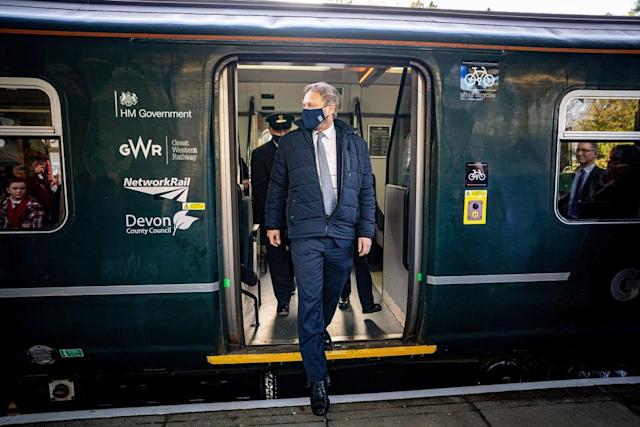Last Saturday was a special occasion for the people of Okehampton in Devon and for railway buffs everywhere. After almost fifty years without a regular passenger train service — thanks Dr Beeching! — the station in the town was fully re-opened. There will now be trains between Okehampton and Exeter every two hours, seven days a week. If campaigners get their way, this restoration will be only the first stage of a full reinstatement of the northern route between Exeter and Plymouth. This line — used more than once by Sherlock Holmes and Dr Watson during their adventures — took passengers around the edge of Dartmoor through some truly lovely countryside. It also had an important “strategic” role as an alternative to the coastal route, which is occasionally washed away by big Channel storms.
It’s hard not to feel delighted for the enthusiasts and dogged locals who have fought long and hard for the return of the railway. Dartmoor sees millions of visitors every year, and Okehampton is one of the key tourism bases for the National Park. What I find particularly striking and encouraging is that there are similar groups all over the country, and similar moves towards undoing some of the more foolish cuts of the last century.
In 2015, for example, the Queen presided at the opening ceremony for the Borders Railway, from Edinburgh to Tweedbank. This was a partial reinstatement of the old “Waverley Route”, so nicknamed because the great author Sir Walter Scott, who wrote the novel Waverley, lived in mock-baronial splendour at Abbotsford close to the line. In its heyday, before the Axe fell in 1969, the Waverley continued well beyond Tweedbank, winding south through the rugged majesty of the Cheviot Hills all the way to Carlisle.
Just over the border, north of Newcastle, work has now begun on the Northumberland Line, intended to help revitalise the struggling small towns of the Northumbrian coalfields. Once again, this is a revival rather than a completely new project: the area used to be served by the Blyth and Tyne Railway until the decline of coal mining and other heavy industry in the area led to the withdrawal of services.
Further south, it was confirmed earlier this year that the Varsity Line between Oxford and Cambridge — one of the more inexplicable casualties of Beeching — would be reinstated. This is no mere elite vanity project — both cities are now important economic hubs. There has been talk of the building of new garden cities in the corridor between the two places. More importantly, a renewed rail connection would hopefully obviate the need for the Oxford-Cambridge Expressway, a planned but currently suspended road project which would be enormously destructive of pleasant countryside and would do nothing to reduce our over-dependence on private cars.
Even the controversial HS2 is to some degree the reconstruction of another line that fell victim to short-sighted transport planners. The Great Central Main Line, opened in 1899, was the last of the great Victorian railway projects, and became an important freight route between London, the Midlands and Manchester. The GCML was closed because it was considered to duplicate existing routes; fifty years on, one of the key reasons given for HS2 is that there is just not enough capacity on existing lines between London and places like Birmingham and the Liverpool-Manchester-Leeds conurbation.
It would perhaps be optimistic to talk of a rail renaissance, given the government’s doubtful ability to get large-scale projects done — only recently it was confirmed that the eastern leg of HS2 is to be cancelled and that plans for better connections within the M62 corridor had been significantly scaled down.
All the same, the trend is most definitely in the right direction. A revival is not a golden bullet; but it is essential for a greener and less congested Britain.











Join the discussion
Join like minded readers that support our journalism by becoming a paid subscriber
To join the discussion in the comments, become a paid subscriber.
Join like minded readers that support our journalism, read unlimited articles and enjoy other subscriber-only benefits.
Subscribe